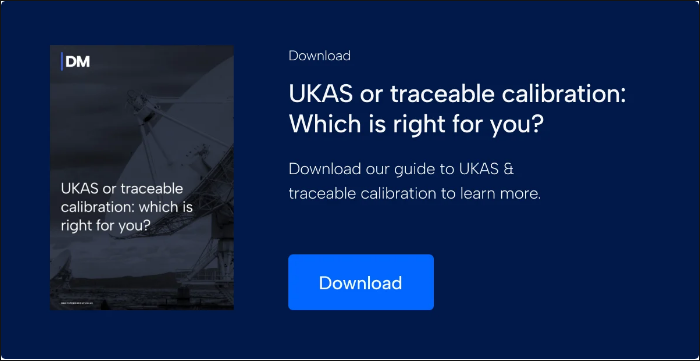Key components of vibration calibration systems
Accurate vibration calibration is fundamental to ensuring measurement equipment delivers dependable data across industries where precision matters most from aerospace and automotive to energy and manufacturing.
Understanding the key components of a vibration calibration system helps businesses appreciate how these systems safeguard reliability, compliance and long-term equipment performance.
The foundation of accurate vibration calibration
Behind each vibration measurement reading lies a network of precisely configured tools designed to verify that instruments measure vibration with absolute confidence. A vibration calibration system serves as that foundation, providing the reference conditions under which accelerometers, vibration meters and sensors can be accurately assessed.
At its heart, the system reproduces controlled vibration signals that mirror real-world motion. These signals are measured, compared and verified to ensure that the instruments being tested provide results aligned with national and international standards. This process highlights the quality and consistency of vibration data across industries that rely on it for performance testing, maintenance and safety validation.
Vibration calibration components in detail
Vibration exciter
The vibration exciter generates controlled motion that simulates the vibration environment instruments encounter in use. According to the standard ISO 16063‑21, the exciter must limit transverse motion to under 10% for frequencies up to 1kHz and under 30% for frequencies higher than 1kHz in order to maintain calibration accuracy. It must also furnish uniaxial, stable, distortion-free vibratory movement at the required frequency and amplitude to avoid adding uncertainty to the measurement
Reference accelerometer
The reference accelerometer serves as the benchmark sensor whose known sensitivity is used to compare the device under test (DUT). The calibration process often uses the “back-to-back” or “comparison” method, in which a reference accelerometer and the DUT are mounted and excited together so that they experience the same motion. Accurate traceability to national or primary standards is required for the reference accelerometer in order to keep the calibration chain valid.
Signal conditioner and amplifier
The vibration signals generated by the exciter are often small and require amplification before being analysed. The signal conditioner ensures that the output remains within the required bandwidth and free from noise interference. Modern conditioners integrate filtering and digital processing to maintain signal integrity, delivering a clean reference signal for accurate comparison and analysis.
Data acquisition system
Precision calibration depends on accurate data capture. A high-quality data acquisition system (DAQ) records the vibration signals from both the reference accelerometer and the DUT. The DAQ processes these signals simultaneously, allowing for direct comparison and measurement of deviations. The accuracy of this component determines how confidently results can be reported and trusted.
Calibration software
Specialist software brings all components together. It interprets raw data, performs mathematical analysis and generates calibration certificates that document the system’s performance and traceability. Many modern systems now integrate automated features, reducing human error and providing digital records compliant with ISO 17025 requirements.
Why precision matters
Accurate vibration calibration directly influences how businesses manage safety, quality and performance. A single miscalibrated sensor can distort test results or mask early signs of equipment failure, leading to costly downtime or safety risks. By maintaining precise calibration of vibration measurement tools, organisations ensure consistent reliability in condition monitoring, predictive maintenance and structural testing applications.
In industries where compliance is non-negotiable, such as aerospace or automotive, calibration is a safeguard of quality assurance and operational excellence.
Partnering with a trusted calibration provider
Vibration calibration systems demand accuracy at every level from the exciter that generates motion to the software that validates it. To achieve dependable, traceable results, it’s essential to work with an accredited calibration provider equipped with advanced technology and proven expertise.
At DM, we deliver UKAS-accredited calibration services across vibration and related measurement systems. Our engineers apply precision instrumentation and controlled calibration environments to ensure every measurement you rely on is backed by accuracy, compliance and confidence. Download our guide below to find out more.
Book your calibration now
Our experts are on-hand to handle all of your calibration needs.
